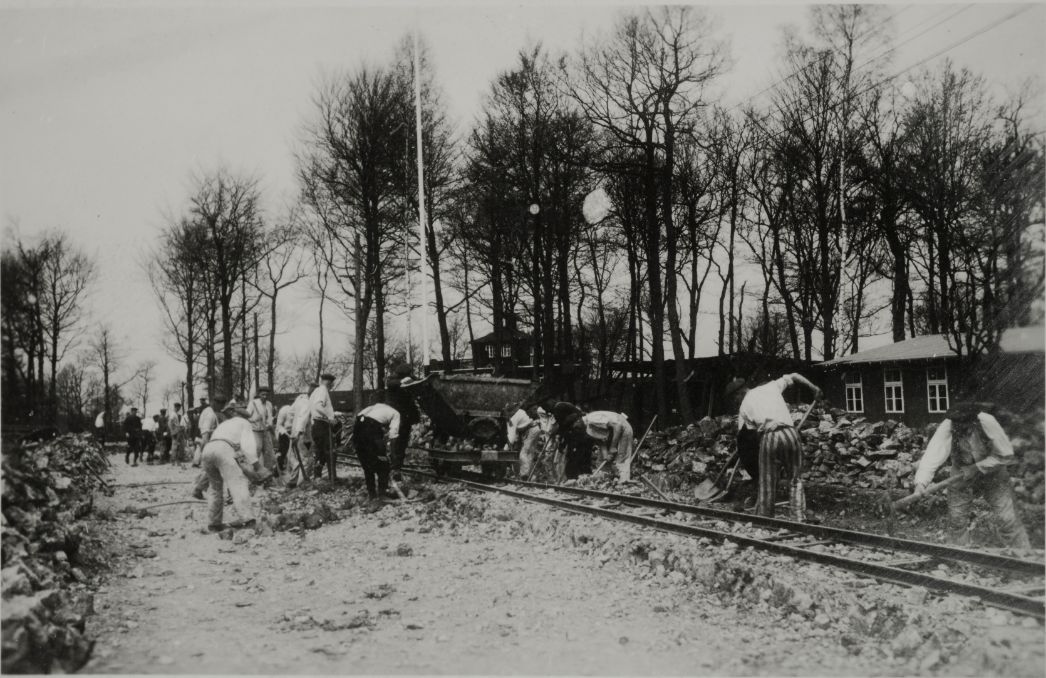
©International Court of Justice, The Hague
Bruno Apitz was committed to the Buchenwald concentration camp in early November 1937. He later recalled the heavy physical labour in the camp’s construction as follows:
“Worked! Oh, that work! We excavated to the point where we were dripping with sweat in the freezing cold. Woe to anyone who dared to straighten his aching back, take a breather between two breaths. No sooner had he done so than he’d feel the butt of a rifle or boot of an SS guard in the small of his back. Or we had to lug hundredweight loads.
Laden with planks, boards and stones, we waded through ankle-deep mud like animals. We transported the huge trunks of hundred-year-old beeches. Twenty to thirty men per trunk. The work gangs moved through mud and sludge like centipedes. Left, two, three, four. Backs bent, groaning under the massive load, left, two, three, four.” 1
In the spring of 1938 the City of Weimar officially declared the camp on the Ettersberg a new municipal district “Weimar-Buchenwald”. It was not until 1940 that the first construction phase ended. But even after that, Buchenwald was an ongoing construction site. The SS mercilessly continued forcing through new building projects such as that of an armaments factory next to the camp and the Buchenwald Railway. These projects cost countless inmates their lives.
1 Bruno Apitz, “Tagsüber schwerste Arbeit in Schlamm und Dreck,
und nachts ließ man uns nicht schlafen”, in: Das war Buchenwald:
Ein Tatsachenbericht (Leipzig, 3
1946), pp. 42–43

